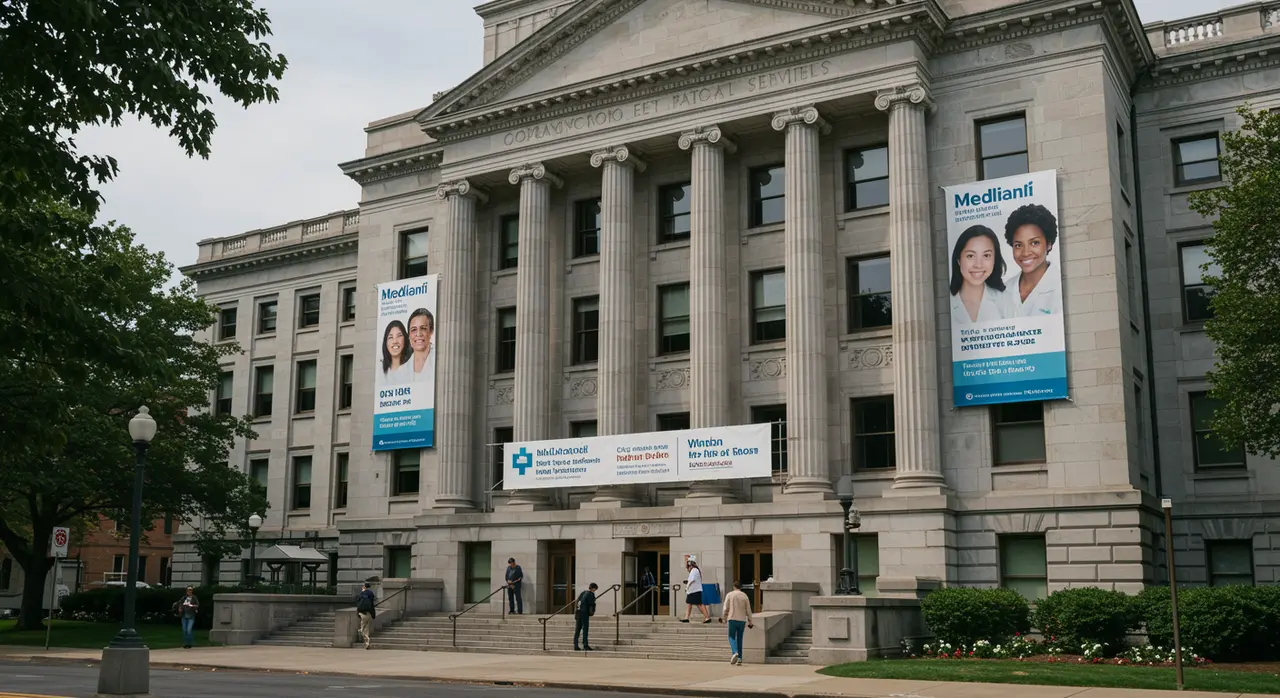States Confront Medicaid Crisis Amid Soaring Costs of GLP-1 Obesity Drugs
27 views
As the nation grapples with an obesity epidemic affecting nearly 40% of adults, the soaring cost of GLP-1 drugs like Wegovy, Ozempic, and Zepbound is forcing states to confront a growing fiscal challenge. These medications, originally developed to treat diabetes, have rapidly gained popularity for their weight-loss benefits, driving Medicaid spending to unprecedented levels. Pennsylvania, for example, estimates its Medicaid program will spend a staggering $1.3 billion on GLP-1 drugs by 2025, prompting discussions about restricting eligibility based on factors such as body mass index or prior use of alternative treatments. This trend reflects a broader struggle among states, some of which are reconsidering coverage altogether amid mounting budgetary pressures.
States Wrestle With Medicaid Costs as GLP-1 Drugs Surge in Popularity
The meteoric rise of GLP-1 medications has reshaped the landscape of weight management and diabetes care in the United States. Prescriptions for these drugs have increased by over 400% between 2019 and 2023, with Medicaid spending ballooning from $577.3 million to $3.9 billion during that same period. At least 14 states currently provide Medicaid coverage for these medications to treat obesity, but the financial strain has led others to end coverage or debate its feasibility. While advocates argue that GLP-1 drugs can improve overall health outcomes and potentially lower future healthcare costs, concerns about affordability and sustainability loom large.

Pennsylvania’s projected $1.3 billion expenditure by 2025 serves as a stark example of the financial dilemma states face. To address this, state officials are exploring cost-management measures, including limiting prescriptions to patients who meet specific criteria, such as having a high body mass index or demonstrating unsuccessful attempts with other treatments. These discussions underscore the delicate balance between providing access to potentially life-changing medications and safeguarding public funds.
Medicare’s stance on GLP-1 drugs has further complicated the issue. Despite calls to include these medications under Medicare Part D, a recent proposal was rejected due to the projected $35 billion cost over the next decade. Without Medicare coverage, the burden falls disproportionately on state Medicaid programs, which are already stretched thin. This lack of federal support has led some states to consider alternative strategies, such as prescribing less expensive medications or limiting coverage duration.
A Complex Debate Over Health, Costs, and Equity
The debate surrounding GLP-1 drugs extends beyond financial concerns, touching on broader questions of health equity and medical efficacy. Obesity, a condition linked to diabetes, heart disease, and other serious health risks, has long been a public health challenge. Proponents of GLP-1 medications argue that they offer a rare opportunity to address obesity on a large scale, potentially reducing the prevalence of related diseases and lowering long-term healthcare costs. For some patients, these drugs have delivered transformative results, enabling significant weight loss and improved metabolic health.
However, the picture is far from uniform. Clinical studies have shown mixed outcomes, with some patients experiencing modest weight loss and others struggling with side effects ranging from nausea to gastrointestinal issues. Additionally, questions persist about whether patients will require lifelong treatment to maintain results, further complicating the financial calculus for Medicaid programs. For states already facing budget deficits, the prospect of indefinite coverage for an ever-growing pool of eligible patients is daunting.
Equity concerns also loom large. Critics argue that restricting access based on criteria like BMI or prior treatment attempts may disproportionately affect low-income individuals, who are already at greater risk for obesity-related health issues. Medicaid is designed to serve vulnerable populations, yet the rising costs of GLP-1 drugs risk creating a tiered system where access to cutting-edge treatments is contingent on stringent eligibility requirements. This tension highlights the broader challenge of balancing innovation in healthcare with equitable access.
Advocates for GLP-1 coverage often point to the potential for long-term savings. By reducing rates of obesity and related diseases, these medications could theoretically lower the need for costly interventions like bariatric surgery or treatment for advanced diabetes. Yet, the upfront costs remain a significant hurdle, particularly for states with limited budgets. Policymakers are thus caught in a difficult position: investing in preventive care now or risking higher healthcare expenses down the line.
Navigating an Uncertain Future
The rise of GLP-1 drugs presents a microcosm of the broader challenges facing the U.S. healthcare system. As states wrestle with the financial implications of covering these medications, the debate underscores the tension between immediate costs and long-term benefits. While some states have embraced GLP-1 drugs as a tool to combat obesity, others are scaling back coverage, citing concerns about sustainability. This patchwork approach risks exacerbating disparities in access to care, leaving patients in some states with fewer options than their counterparts elsewhere.
The rejection of Medicare coverage further complicates the landscape, pushing more responsibility onto state Medicaid programs. Without federal support, states are left to navigate the complexities of funding these expensive medications while addressing the growing demand. For patients, the stakes are high. GLP-1 drugs represent a beacon of hope for many struggling with obesity, but the uncertainty surrounding coverage threatens to dim that light.
Ultimately, the debate over GLP-1 drugs reflects a broader reckoning with the costs of innovation in healthcare. As states and policymakers weigh the benefits of these medications against their financial impact, the outcome will likely shape the future of obesity treatment in the U.S. For now, the question remains: how can the promise of transformative care be reconciled with the realities of limited resources? The answer will require not only fiscal ingenuity but also a commitment to equity and long-term health outcomes.